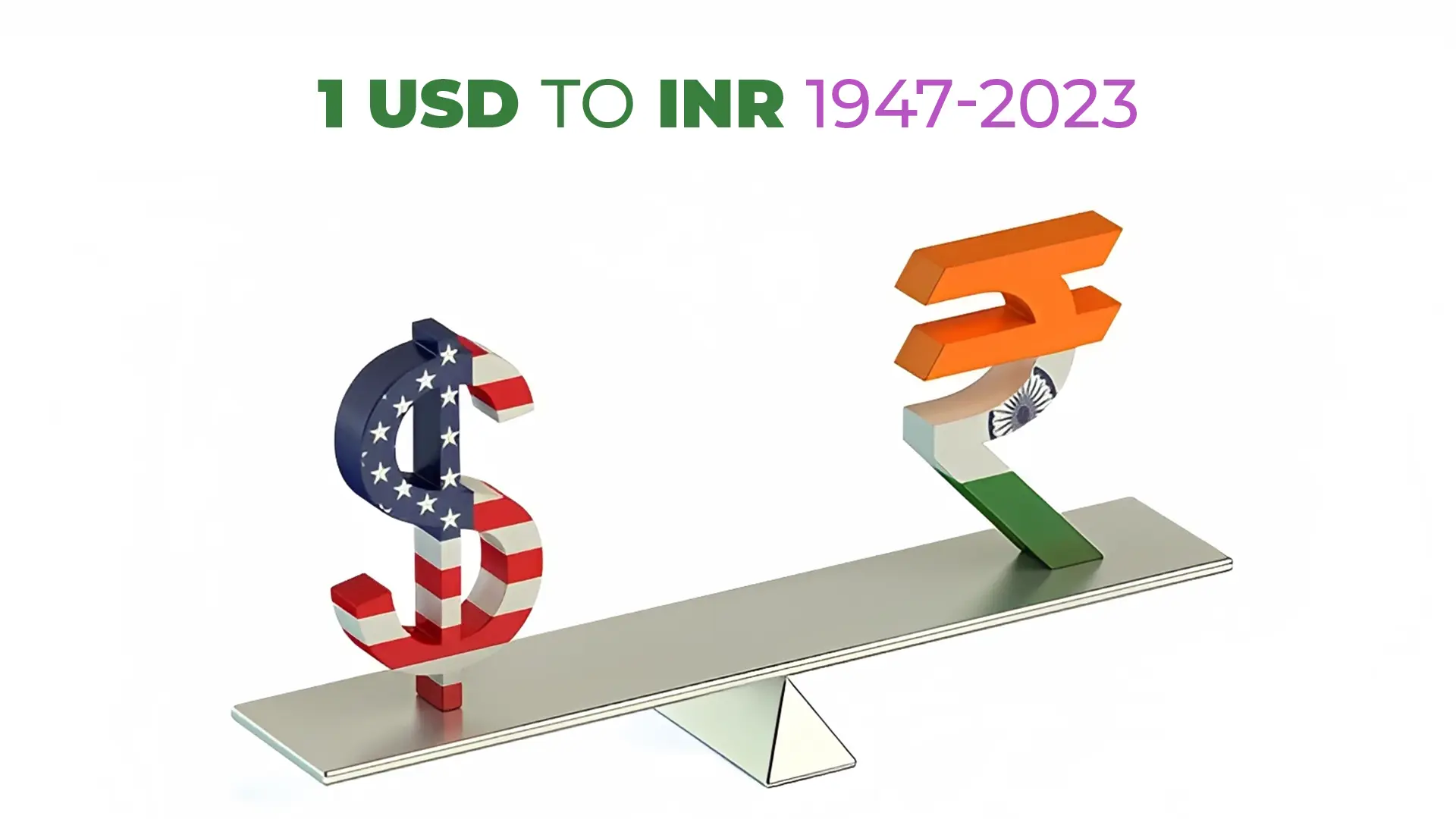 15235.0 views
15235.0 views
1 USD to INR from 1947 to 2023: History of the Indian Rupee's Exchange Rate
The US dollar is one of the most widely used currencies and greatly influences international trade. And its value has always been higher, determining the value of other currencies worldwide. As a result, the value of the Indian currency, like that of other currencies, is determined by comparing it to the dollar.
The exchange rate was different when we converted INR to USD in 1947. But when we convert INR to USD Forex Online today, the Indian currency has a lesser value than the USD. In the present day, the exchange rate between 1 USD and INR hovers around 80 to 85 INR. This means that 1 USD fetches around 80 to 85 Indian Rupees. For travellers from India visiting foreign countries, exchanging INR for USD and then converting it to the local currency has become common, especially when travelling to destinations in South East Asia and the Middle East.
The dollar is far easier to trade than any other currency, and it emerged as a vital means of trade after World War I. This part (1 USD in INR in 1947) of history gives us a better understanding of INR's evolution since then.
This graph illustrates the changing value of 1 USD to INR from 1947 to 2023.
This chart depicts the changing value of 1 USD to INR from 1947 to 2023, and you can observe that 1 dollar to rupee in 1947 has risen over the years.
Graph showing the changing value of 1 USD in INR from1947 to 2023
Dollar vs INR history
A glance back in history reveals an interesting fact: when India gained independence in 1947, the value of 1 INR was believed to be equal to 1 USD. However, various arguments have been put forth to explain this equivalence. One explanation suggests that before the introduction of the metric system, all currencies had the same value. Another theory links the higher value of INR to the fact that India was under British rule, and the value of the pound was higher during that time. Some estimates suggest that 1 pound was equivalent to 13.37 rupees in 1947, which would put the value of 1 USD at around 4.16 INR.
The history of the USD to INR exchange rate can be traced back to the Bretton Woods Agreement in 1944, which determined the value of every currency in the world. As India gained independence and adopted the international metric system, the value of the Indian Rupee underwent several changes.
Over the years, the value of the INR to USD has consistently declined. By 1970, 1 USD was equivalent to 7.50 INR, marking a significant depreciation from the initial equivalence at independence.
Devaluation of the Indian rupee since 1947
Devaluation refers to a decrease in the domestic currency's outward value while the internal value remains unchanged. If there's an unfavourable Balance of Payments, a country devalues its currency (BOP). If a country's Balance of Payments is negative, it must weaken its currency so that exports become cheaper and imports become more expensive.
Since the British were ruling India before its independence, the Indian rupee was tied to the British Pound then, which kept the value constant for a short time. According to reports, 1 pound was worth 13 INR from 1927 until 1966. The agreement ended in 1966, and the rupee began to depreciate. Until 1971, when India launched its 5-Year Plan following independence, the Indian rupee was pegged to the US dollar at a 7.5 rupees per dollar rate.
Several key factors have played a pivotal role in determining the current status of the Indian Rupee:
- Decimalisation in 1957: The Indian Rupee was divided into 100 new paise increasing its value.
- The 1966 economic crisis: India faced financial difficulties due to the consistent balance of payments deficits and the impact of wars with China and Pakistan, leading to a 57 percent devaluation, making 1 USD equal to 7.5 INR.
- The 1991 economic crisis: A balance of payment problem led to the devaluation of the rupee to 25 INR per USD, prompting economic reforms and liberalization.
- Depreciation in 2013: Increased dollar demand from imports and capital outflows resulted in the INR falling from 55.48/$ to 57.07/$.
- 2016 Demonetization: An initiative to replace old currency notes affected the value of the INR, which settled in the range of 67 to 71 INR per USD in the following years.
The value of the INR to USD has had a profound impact on India's economic standing and international trade. While it showcases the economic journey of an independent India, it also affects the rates of imports and the purchasing power of Indian travellers abroad. The quest to maintain a stable and robust exchange rate continues as India strives to strengthen its position in the global financial landscape.
I hope you enjoyed the "1 USD in INR in 1947" article, visit our Website for foreign exchange services and more such articles.

 Home
Home Buy SIM
Buy SIM





